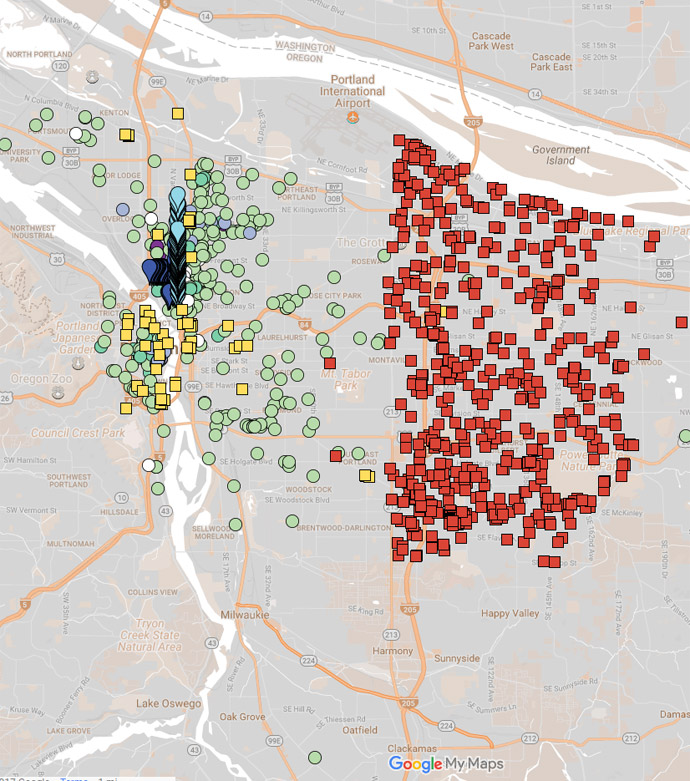The diasporization of African American community members is separating individuals and families, cultural and social resources throughout a dis-integrated geography. This is adding stress and cost, fomenting impoverishment.
When an individual’s income exceeds the local cost of living, they have a distinct economic advantage, mitigating for separation from traditional resources and networks. When an individual’s income is below the cost of living, they have a distinct disadvantage, exacerbated all the further if separated from family, friends, neighbors or other partners who have historically provided support, and now live in other parts of the city.
The condition of poverty is exacerbated by the racial income gap between white and Black Oregonians. It has a related health-outcome burden that is most frequently borne out within underserved communities. To close these two gaps, the income and assets, overall, in the African American community need to be raised to parity and the location of assets and resources needs to be fairly distributed across a larger city geography.
Part of the needed improvement is to locate opportunities to support community areas in those places where people are Anchored due to displacement. The other is to connect underserved people with opportunity in Root areas. Creating better and more convenient community networks between them is crucial. Culturally significant services in the city’s Root and Anchor areas are needed to support and help people in poverty gain access to housing, income, education and employment.
Eighty-five thousand Black individuals live in Oregon according to 2015 figures from the U.S. Census Bureau. Oregon’s share of health disparities costs is $6.25 billion per year.
The potential benefit of supportive neighborhood services for the African American community within a public health program is reduced racial disparities and fiscal cost to government and non-government services. Organizing and encouraging community services for the African American community is a major step forward in reducing stress and improving health outcomes within the city, county and State.
Gentrification is a housing, economic and health issue that affects a community’s history and culture and reduces social capital. (CDC)










